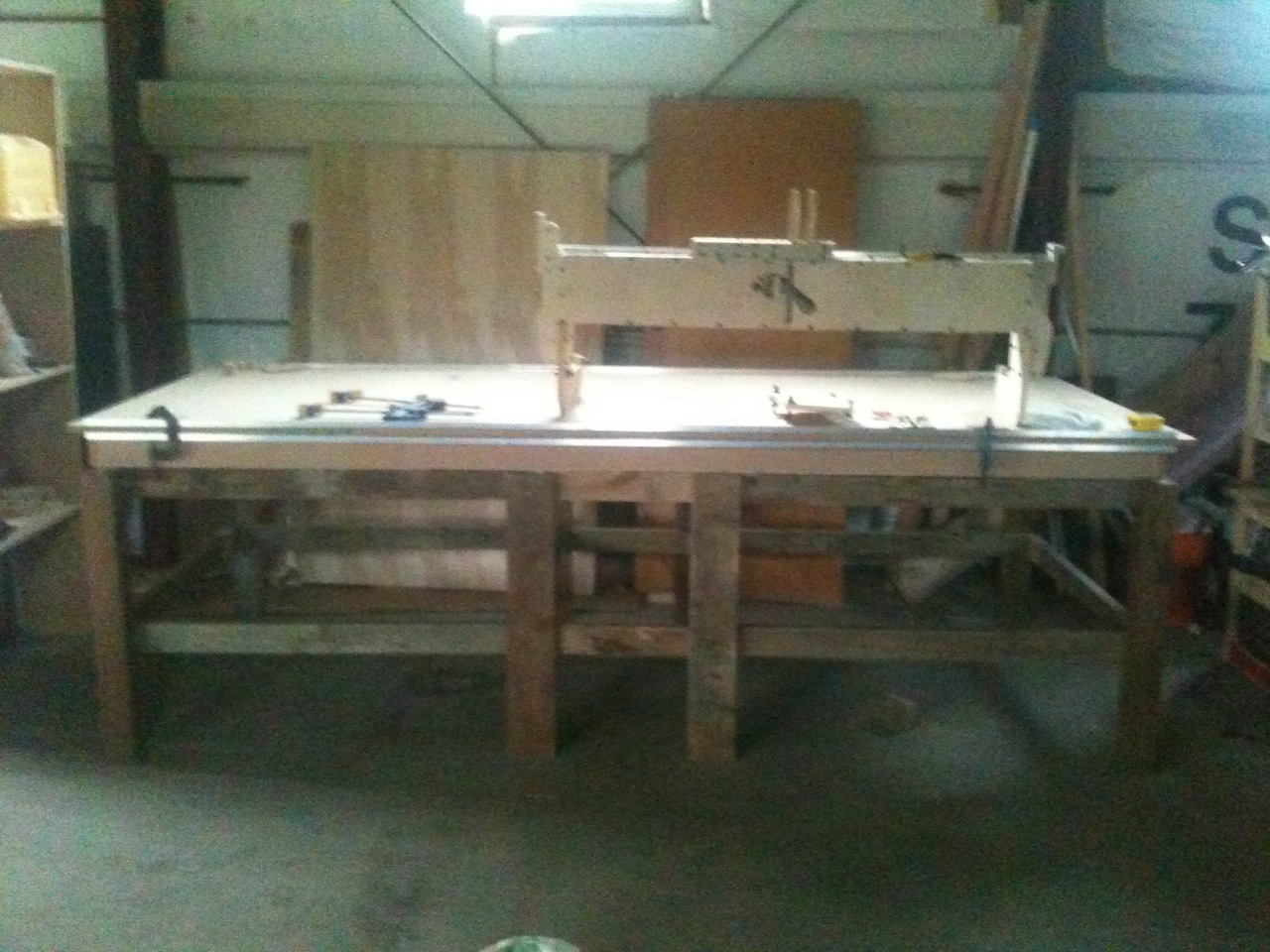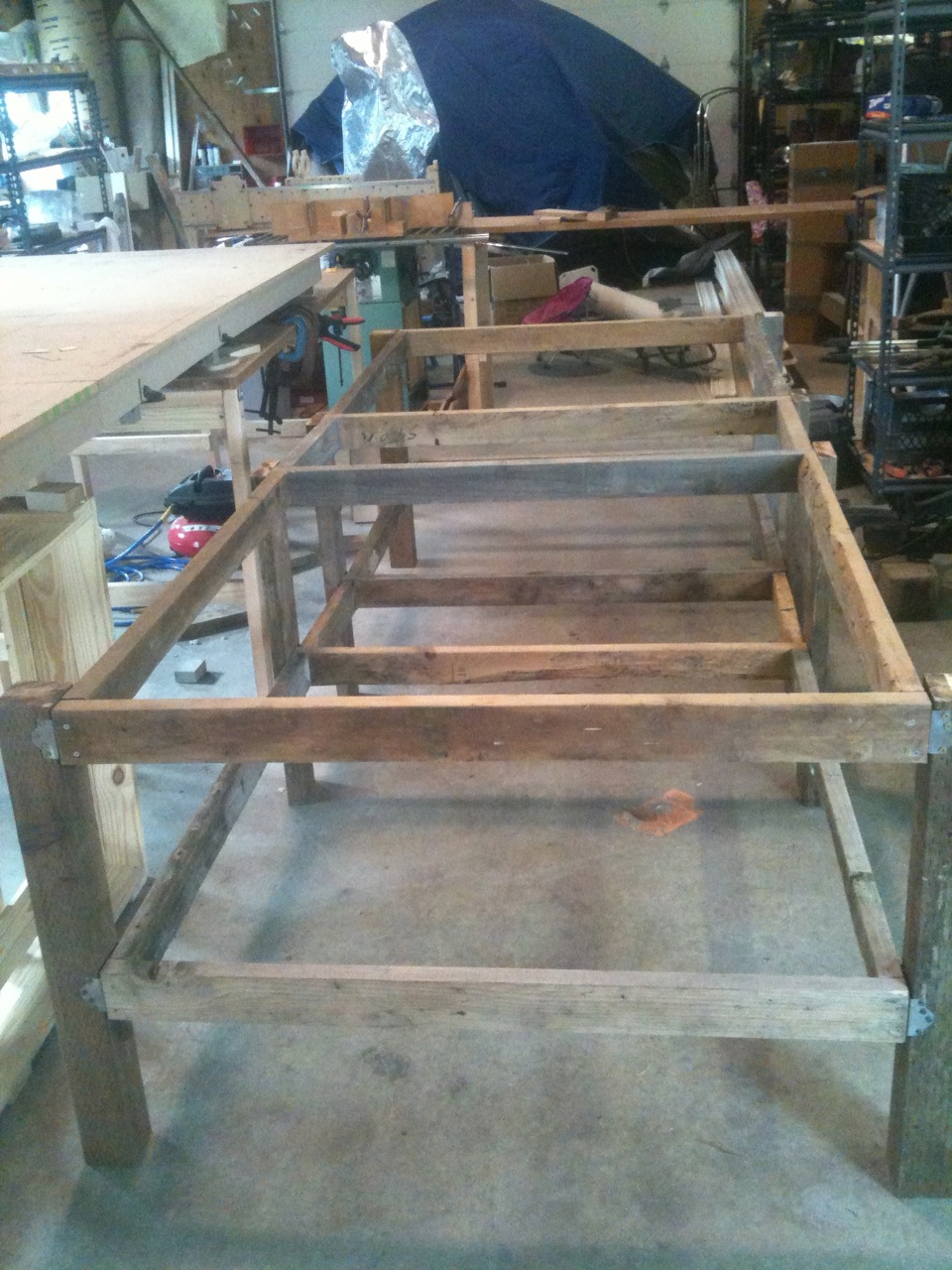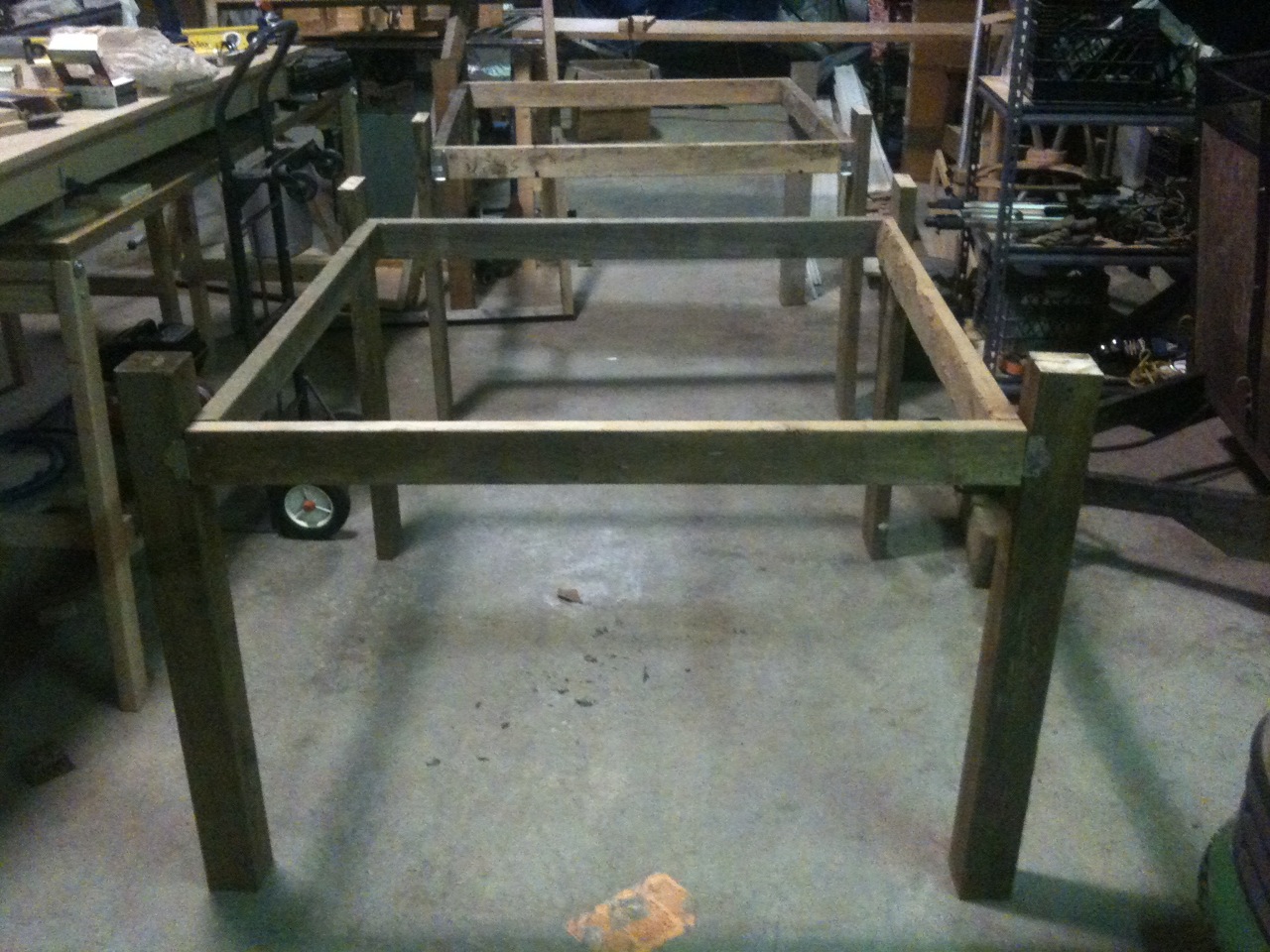The CNC build has been stalled out for months. Looking back, I realize that I haven’t really touched it since Thanksgiving (2 full months and some change ago).
Thanks to John C in CA’s ingenious idea, I was able to ensure the grid was level without a lot of hassle. Anthony and I clamped temporary legs onto the grid, then leveled it to within an inch of its life, and put the MDF tops on to “relax”. That was before Christmas, I think.
Then, a couple weekends ago, I decided to put in a little time, and was able to get the Y-axis rails drilled and installed. That was satisfying. Now the Z table rolls back and forth along the Y axis.
But, mostly, the CNC just sat. Taking up a lot of room in the shop. And not getting worked on.
So today, I forced myself out there again. I really am quite close to finishing, I just need to get it over the final hump.
I spent some time getting the Z-axis rails drilled and installed. I even got 2 of the Z-axis bearings in place (although I am not certain I’m installing the bearings correctly — I’ll look into that during “assembly”). Now that those rails are on, I can complete the Z axis upper and lower assemblies, and then I’m pretty much just waiting on the torsion box.
Ah, the torsion box. I’ve spent a lot of time in the past few months wondering whether I should have just sprung for the kit. It’s sounding cheaper and cheaper as the build drags on. But I quickly realize that I would still be stuck on the torsion box. It’s just a very large object, and I need to keep it as well-built as possible, but the pieces are so large that I can’t really handle them by myself. So I have to wait for friends to drop by, and everyone has to be in the mood to do some woodworking.
When it rains, it pours, and I got two helpers today; both Anthony and Cliff showed up this afternoon! I jumped at the chance to get the torsion box top installed. We spent some time figuring out how to get the top pieces set in place (even got to rip a 2×3 down to 2″ on the tablesaw! ooo…), and pretty soon, we were ready to glue and nail the first chunk in place. With the “keystone” set, the other two pieces went on with no trouble.
The torsion box top is installed! Yes! Progress!
The glue is drying and the nails are holding everything in place.
As usual, I will sign off with the remaining punchlist:
– Torsion box bottom needs to be installed
– A base for the torsion box needs to be designed and then built
– X-axis rails need to be installed
And then we’re into assembly:
– Z-table bearings need to be installed permanently
– Motor mounts, chain mounts, sprockets, chains, axis bearings, Z drive nut, router mount clamps… I’m sure there’s stuff I’m forgetting.
I assume that building the base will be the toughest part of what’s left. It seems like the most time-consuming and measurement-heavy part of what’s left, and I’m going to try to do it with the scrap wood I have lying around, which adds an extra challenge. I figure the base should take about one session of design, measuring, and assessing the scrap pile for candidate pieces, then another session or two to cut and assemble the base. Then I need a couple friends to help get the base in place and get the torsion box set atop it.
I figured out how to clamp a jig to the drill press to make the holes in the rails come out right, although doing 10′ long rails will still pose a challenge. Shouldn’t take much total time to get that done, though. Since I’m cutting all the holes at the same time, I should be able to get this done in one long session, or maybe two.
Installing the bottom of the torsion box will be tricky — Nobody wants to flip the thing over twice, so I’m probably going to have to do it by jacking up one end or the other. We’ll see how that goes. It’s the kind of thing that I wouldn’t quit until I finished it, so that’s one should-be-quick session, might be able to squeeze in some other work into this one.
As for assembly, I don’t know of any major showstoppers right now. In theory, I could reinstall the router on the old CNC machine and re-cut any seriously offending parts. But I’m going to try to get by with what I have (with the understanding that I’m going to immediately cut out a full set of new parts on the new machine, once it’s running). Call it 3 sessions or so, but I hope that once it’s down to assembly, I’ll be motivated and happy to be making progress.
So, 4 or 5 evenings of construction, then another 2 or 3 of assembly; if I can put in some time during the week, I might be able to finish in February. If it’s weekends, I’ll be pushing it to finish before Kristi’s birthday.
I can see the finish line. I just need to keep making forward progress, and I’ll get there.
And I can’t thank Anthony and Cliff enough. Getting the torsion box top on was definitely not a 1 man job.




